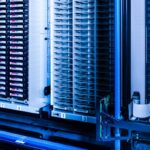The news that Broadcom’s acquisition of VMware has finally gone through, after more than a year of uncertainty, will have relieved a lot of people. Even more of a relief, though, is that we’re finally getting to see what the new organization might look like.
Listening to Broadcom boss Hock Tan at VMworld Explore earlier this month, he clearly aimed to reassure (not too surprising, given the venue!), but it actually felt as if he only spoke about VMware in one dimension – the virtual data centre, via VMware Cloud Foundation (VCF). The feel was almost of a big player buying a startup for some key piece of technology it lacks, never mind the rest of it.
Now all that has changed. In a blog celebrating the deal’s completion, Tan writes of his “apps anywhere” vision of VMware becoming ubiquitous – the foundation of every data centre, physical or virtual, and of both private and hybrid clouds. VCF is still the keystone, but he also discusses application networking and security, and explicitly calls out Tanzu as the modern apps layer for VMware customers.
Clouds still need infrastructure
He solidly positions VMware as infrastructure technology, and writes: “Our goal is to help customers optimize their private, hybrid and multi-cloud environments, allowing them to run applications and services anywhere.”
That’s an extension of how VMware execs often speak, when they talk of being the best at multi-cloud and hybrid, enabling you to run applications wherever they fit best, on any cloud, public or private. And that multi-cloud story is all true, of course – as long as you accept that “any cloud” actually means “any cloud, so long as it’s running VMware.”
None of which is to diss VMware – it has a powerful and mature ecosystem, bolstered in recent years by some savvy acquisitions including Pivotal (now Tanzu) and Carbon Black, and it’s well up to the task of building and operating a software-defined data centre. Is it unreasonable to point out the implicit assumptions in some of its claims?
From mainframe to the edge
Perhaps it is. Broadcom may not possess alternatives to Windows or Office, but as far as the enterprise data centre and complex IT infrastructure is concerned, it now has one of the strongest software portfolios in the industry. That’s especially true once you include the mainframe, DevOps, AIOps, service management and other capabilities that it acquired with CA Technologies. Who knows, perhaps we will even see VMware on the mainframe at last!
Anyway, you can’t build hybrid multi-cloud without some kind of software foundation. Sure, the VMware route is one of several you could take, alongside OpenStack, Nutanix and a few others, but Broadcom clearly intends its option to be the best and most widely used. It’s going to be very interesting seeing how it all scopes out.
Bryan Betts is sadly no longer with us. He worked as an analyst at Freeform Dynamics between July 2016 and February 2024, when he tragically passed away following an unexpected illness. We are proud to continue to host Bryan’s work as a tribute to his great contribution to the IT industry.






Have You Read This?
From Barcode Scanning to Smart Data Capture
Beyond the Barcode: Smart Data Capture
The Evolving Role of Converged Infrastructure in Modern IT
Evaluating the Potential of Hyper-Converged Storage
Kubernetes as an enterprise multi-cloud enabler
A CX perspective on the Contact Centre
Automation of SAP Master Data Management
Tackling the software skills crunch